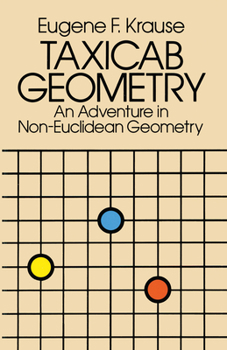Taxicab Geometry: An Adventure in Non-Euclidean Geometry
Select Format
Select Condition 
Book Overview
This entertaining, stimulating textbook offers anyone familiar with Euclidean geometry -- undergraduate math students, advanced high school students, and puzzle fans of any age -- an opportunity to explore taxicab geometry, a simple, non-Euclidean system that helps put Euclidean geometry in sharper perspective.
In taxicab geometry, the shortest distance between two points is not a straight line. Distance is not measured as the crow flies, but as a taxicab travels the "grid" of the city street, from block to block, vertically and horizontally, until the destination is reached. Because of this non-Euclidean method of measuring distance, some familiar geometric figures are transmitted: for example, circles become squares.
However, taxicab geometry has important practical applications. As Professor Krause points out, "While Euclidean geometry appears to be a good model of the 'natural' world, taxicab geometry is a better model of the artificial urban world that man has built."
As a result, the book is replete with practical applications of this non-Euclidean system to urban geometry and urban planning -- from deciding the optimum location for a factory or a phone booth, to determining the most efficient routes for a mass transit system.
The underlying emphasis throughout this unique, challenging textbook is on how mathematicians think, and how they apply an apparently theoretical system to the solution of real-world problems.






